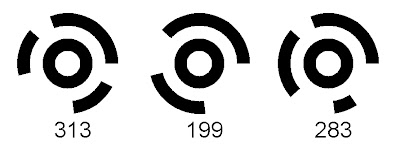This past weekend, we took a field trip to the
Boston Museum of Science to learn more about the applications of Tangible User Interfaces and to observe them in action. In the interest of the latter, I took a look at an Economics-based exhibit in the social learning area of the museum. It was entitled Me vs. Us - Compete or Cooperate, and it is a decision making game for two people.
This exhibit is constructed as follows: there are two terminals that face each other at an open angle, and each has a control console consisting of three simple buttons. The displays are immediately recognized as an activity for two because of how the exhibit is split with the title breaching the halves, and the controls are immediately accessible. The only actions according to the controls are Take, Share, and Proceed to the Next Screen. The Proceed button was used when the user was reading the directions, and the other two were used in gameplay.
The game consists of five rounds of decision making. At the beginning of each round, $100 dollars is available to be split between the two players. The players decide whether they would like to share this money or take it all. There are three scenarios, then - If they both share, they both get $50, if they both take, they each get $0, and if one shares and one takes, the taker gets all $100. Both players enter their choice, and they receive feedback after they have both input their decision.
This exhibit is concerned with the economic principles of
Game Theory, especially relating to a capitalist society. The learning goals would then be to stimulate interest in the subject of economics in adolescents and teenagers, those who would likely have the opportunity to take a class in economics in the near future. The exhibit appeared to draw an older crowd, as it presented itself as an opportunity for couples to compete using their business sense. I did not observe any young children attempt to play the game, as adults would likely steer their kids away from the relatively sophisticated gameplay, and kids would likely not approach it on their own.
Overall, I find this exhibit to be a fun competition in a museum that doesn't have too many competitive exhibits. It is meant as a teaching tool for younger kids, but it can be enjoyed by older museum-goers as well. One problem that I found with the game was that it didn't mention the underlying principles to any extent, and it didn't tell the users how much they would have won if they'd made different decisions. The interface was also very plain; it didn't have too much visual appeal, and it only involved the sense of sight. If the game were to be extended to involve other senses, possibly with objects and speech, it may be more engaging to the user.

